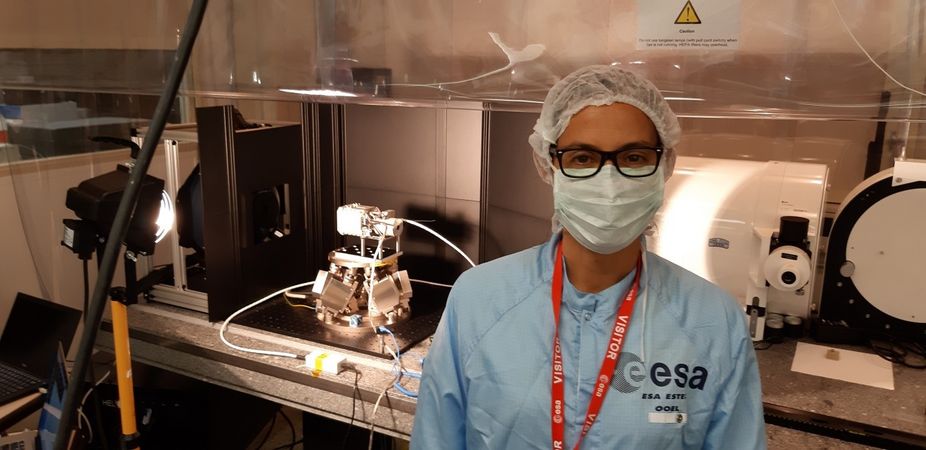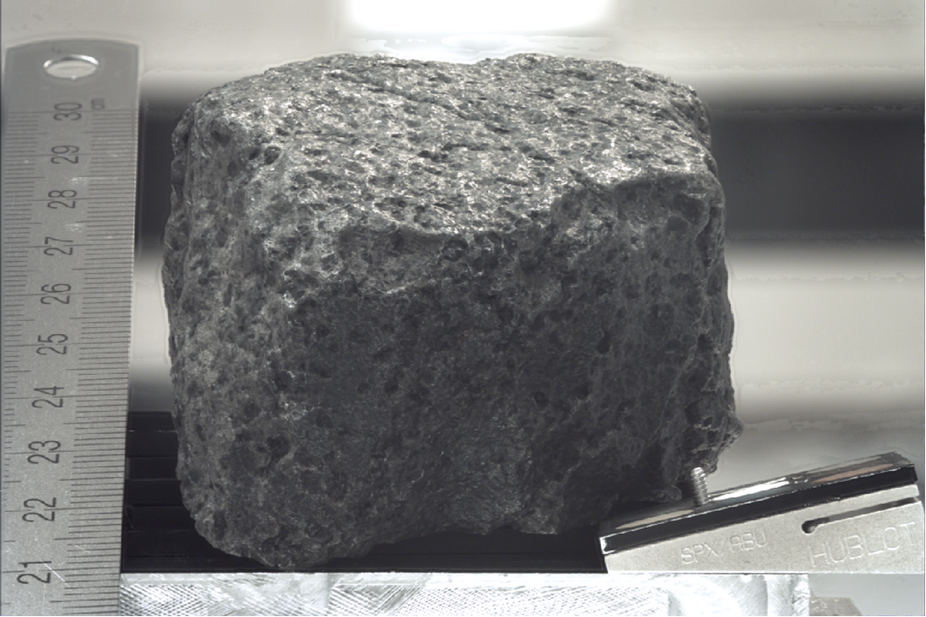Maria del Pilar Caballo Perucha is a calibration expert at DIGITAL, the Institute for Information and Communication Technologies of JOANNEUM RESEARCH. Recently she has geometrically calibrated the "Close-Up Imager" flight model called "CLUPI" for the "ExoMars Rover" at the European Space Research and Technology Center-ESTEC (Noordwijk, The Netherlands).
Close-Up Imager
CLUPI, is a science instrument (PI J.-L. Josset, Space Exploration Institute, Neuchatel, CH) manufactured by a consortium led by Thales Alenia Space. It is a high-resolution imaging system that allows the acquisition of close-up colour images of outcrops, rocks, soils, drilling powder, and core samples. CLUPI has the ability to focus from 11.5 cm to infinity, enabling scientists to discover biosignatures and use these images to determine the geological context of the environment.
Focus Stacking
In order to optimize the science data return, CLUPI uses focus stacking, a technology implemented by JOANNEUM RESEARCH for CLUPI’s on-board software, which combines multiple images taken at different focus distances. With the extracted focused areas, a new image with greater depth of field than the individual original frames is created.
> More information
JOANNEUM RESEARCH
JOANNEUM RESEARCH supplies technology for the "ExoMars Rover"
Maria del Pilar Caballo Perucha calibrating CLUPI in ESTEC (Noordwijk, the Netherlands), Photo: JOANNEUM RESEARCH
JOANNEUM RESEARCH CLUPI geometric calibration target (A3, flat target with random points in three different sizes), Photo: JOANNEUM RESEARCH
Result Example: CLUPI focus stacking 1x image resulting from 16x CLUPI images internally processed of a Martian meteorite (Natural History Museum of Bern). Data courtesy: ESA/Space Exploration Institute


